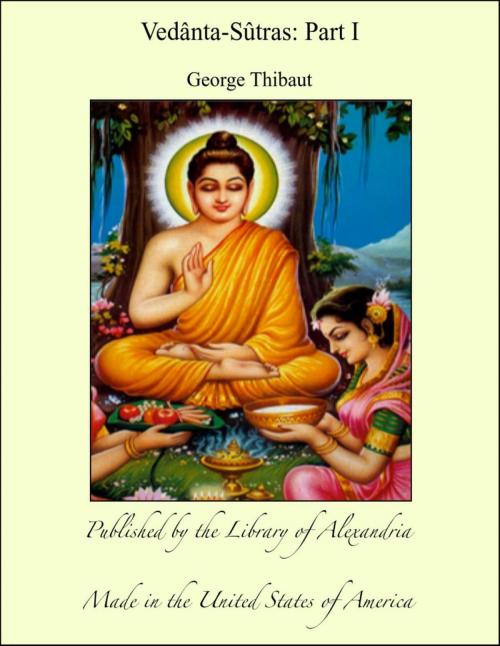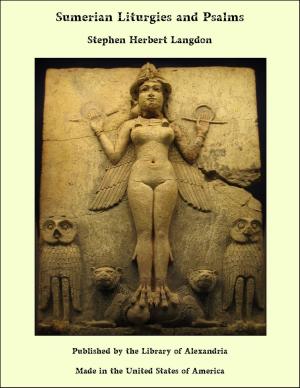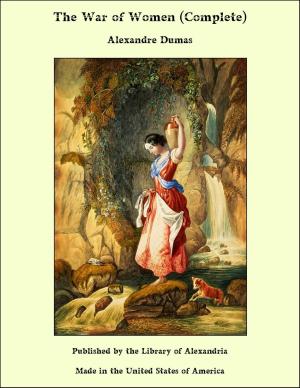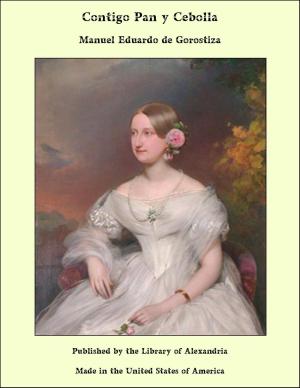| Author: | George Thibaut | ISBN: | 9781465580139 |
| Publisher: | Library of Alexandria | Publication: | March 8, 2015 |
| Imprint: | Language: | English |
| Author: | George Thibaut |
| ISBN: | 9781465580139 |
| Publisher: | Library of Alexandria |
| Publication: | March 8, 2015 |
| Imprint: | |
| Language: | English |
To the sacred literature of the Brahmans, in the strict sense of the term, i.e. to the Veda, there belongs a certain number of complementary works without whose assistance the student is, according to Hindu notions, unable to do more than commit the sacred texts to memory. In the first place all Vedic texts must, in order to be understood, be read together with running commentaries such as Sâyana's commentaries on the Samhitâs and Brâhmanas, and the Bhâshyas ascribed to Sankara on the chief Upanishads. But these commentaries do not by themselves conduce to a full comprehension of the contents of the sacred texts, since they confine themselves to explaining the meaning of each detached passage without investigating its relation to other passages, and the whole of which they form part; considerations of the latter kind are at any rate introduced occasionally only. The task of taking a comprehensive view of the contents of the Vedic writings as a whole, of systematising what they present in an unsystematical form, of showing the mutual co-ordination or subordination of single passages and sections, and of reconciling contradictions--which, according to the view of the orthodox commentators, can be apparent only--is allotted to a separate sâstra or body of doctrine which is termed Mîmâmsâ, i.e. the investigation or enquiry ?at? ??????, viz. the enquiry into the connected meaning of the sacred texts. Of this Mîmâmsâ two branches have to be distinguished, the so-called earlier (pûrva) Mîmâmsâ, and the later (uttara) Mîmâmsâ. The former undertakes to systematise the karmakânda, i.e. that entire portion of the Veda which is concerned with action, pre-eminently sacrificial action, and which comprises the Samhitâs and the Brâhmanas exclusive of the Âranyaka portions; the latter performs the same service with regard to the so-called gñânakânda, i.e. that part of the Vedic writings which includes the Âranyaka portions of the Brâhmanas, and a number of detached treatises called Upanishads. Its subject is not action but knowledge, viz. the knowledge of Brahman. At what period these two sâstras first assumed a definite form, we are unable to ascertain. Discussions of the nature of those which constitute the subject-matter of the Pûrva Mîmâmsâ must have arisen at a very early period, and the word Mîmâmsâ itself together with its derivatives is already employed in the Brâhmanas to denote the doubts and discussions connected with certain contested points of ritual. The want of a body of definite rules prescribing how to act, i.e. how to perform the various sacrifices in full accordance with the teaching of the Veda, was indeed an urgent one, because it was an altogether practical want, continually pressing itself on the adhvaryus engaged in ritualistic duties. And the task of establishing such rules was moreover a comparatively limited and feasible one; for the members of a certain Vedic sâkhâ or school had to do no more than to digest thoroughly their own brâhmana and samhitâ, without being under any obligation of reconciling with the teaching of their own books the occasionally conflicting rules implied in the texts of other sâkhâs. It was assumed that action, as being something which depends on the will and choice of man, admits of alternatives, so that a certain sacrifice may be performed in different ways by members of different Vedic schools, or even by the followers of one and the same sâkhâ.
To the sacred literature of the Brahmans, in the strict sense of the term, i.e. to the Veda, there belongs a certain number of complementary works without whose assistance the student is, according to Hindu notions, unable to do more than commit the sacred texts to memory. In the first place all Vedic texts must, in order to be understood, be read together with running commentaries such as Sâyana's commentaries on the Samhitâs and Brâhmanas, and the Bhâshyas ascribed to Sankara on the chief Upanishads. But these commentaries do not by themselves conduce to a full comprehension of the contents of the sacred texts, since they confine themselves to explaining the meaning of each detached passage without investigating its relation to other passages, and the whole of which they form part; considerations of the latter kind are at any rate introduced occasionally only. The task of taking a comprehensive view of the contents of the Vedic writings as a whole, of systematising what they present in an unsystematical form, of showing the mutual co-ordination or subordination of single passages and sections, and of reconciling contradictions--which, according to the view of the orthodox commentators, can be apparent only--is allotted to a separate sâstra or body of doctrine which is termed Mîmâmsâ, i.e. the investigation or enquiry ?at? ??????, viz. the enquiry into the connected meaning of the sacred texts. Of this Mîmâmsâ two branches have to be distinguished, the so-called earlier (pûrva) Mîmâmsâ, and the later (uttara) Mîmâmsâ. The former undertakes to systematise the karmakânda, i.e. that entire portion of the Veda which is concerned with action, pre-eminently sacrificial action, and which comprises the Samhitâs and the Brâhmanas exclusive of the Âranyaka portions; the latter performs the same service with regard to the so-called gñânakânda, i.e. that part of the Vedic writings which includes the Âranyaka portions of the Brâhmanas, and a number of detached treatises called Upanishads. Its subject is not action but knowledge, viz. the knowledge of Brahman. At what period these two sâstras first assumed a definite form, we are unable to ascertain. Discussions of the nature of those which constitute the subject-matter of the Pûrva Mîmâmsâ must have arisen at a very early period, and the word Mîmâmsâ itself together with its derivatives is already employed in the Brâhmanas to denote the doubts and discussions connected with certain contested points of ritual. The want of a body of definite rules prescribing how to act, i.e. how to perform the various sacrifices in full accordance with the teaching of the Veda, was indeed an urgent one, because it was an altogether practical want, continually pressing itself on the adhvaryus engaged in ritualistic duties. And the task of establishing such rules was moreover a comparatively limited and feasible one; for the members of a certain Vedic sâkhâ or school had to do no more than to digest thoroughly their own brâhmana and samhitâ, without being under any obligation of reconciling with the teaching of their own books the occasionally conflicting rules implied in the texts of other sâkhâs. It was assumed that action, as being something which depends on the will and choice of man, admits of alternatives, so that a certain sacrifice may be performed in different ways by members of different Vedic schools, or even by the followers of one and the same sâkhâ.















